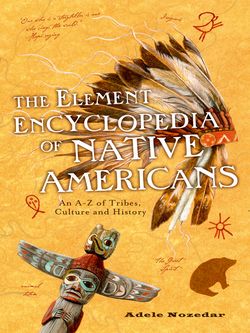Читать книгу The Element Encyclopedia of Native Americans: An A to Z of Tribes, Culture, and History - Adele Nozedar - Страница 84
CADDO
ОглавлениеThis tribe originated in the Red River part of Louisiana, but moved to the Southern Plains area, following the great herds of buffalo, where they became buffalo hunters as well as horse traders. Caddo Indians were recognizable by their dark complexion, their pierced noses and nose rings, and tattoos. They lived in tall, elegantly conical houses made of a wooden framework covered in grasses and reeds. These houses looked a little like an elongated bee hive. Unusually, the Caddoans had furniture such as beds and chairs inside their houses, which possibly made the early Spanish explorers well-disposed toward the tribe. The Caddoans also had a covered house for winter, and a house with open sides and a ventilated raised flooring area for the hot summers.
The white men referred to a “Caddo confederacy” which encompassed the Kichai, Tawakoni, Waco, and Wichita peoples. During the Civil War the Caddo tribes stayed loyal to the Union Government and escaped to Kansas to seek sanctuary. Because of their loyalty, in 1902 each tribal member was accorded citizenship of the United States.
The Caddo were a farming tribe, raising corn, beans, and squash in large clearings which they made in their forests. The tribe was split into two main groups. The Kadohadacho lived along the Red River in what is now the Oklahoma/Arkansas border. The other group were called the Tejas Caddo. The town Nagadoches is actually built on the site of one of the most ancient Tejan settlements. The word Tejas became “Texas” and, in the Caddoan tongue, means “those who are our friends.”
Other tribes spoke almost the same language as the Caddo, including the Wichita and the Pawnee. At one point, all these separate groups belonged to one tribe; their collective myths suggest that at one time all these tribes originated in Arkansas.
The pine forests of eastern Texas have a consistent annual rainfall and a temperate climate, which meant that it made for good farming land. Another advantage for agriculture were the many rivers, streams, lakes, and swamps that could be used to irrigate the land. The woods provided useful hardwood trees, too, and the Caddoan diet was supplemented with nutritious nuts from pecan and walnut trees as well as acorns from the oaks. The Bois de Arc tree was also important, since its tough and springy texture was perfect for making bows. Fortunately for the Caddoans, their territory had the only supply of this particular timber, so they were able to trade these specialist bows with other tribes.
